MTool - Performance monitoring tool for multiplatform distributed systems
Introduction
Quite a long title for such a small software package. But it tells you
exactly what this article is about. In our networked world the amount of
information is growing and becoming less and less manageable. The first
idea for a such tool came from the CERT engineer, who works for one of
the Europe's academic network - SWITCH, Swiss Academic and Research Network.
SWITCH head office is located in Zurich. Less than two dozen of highly
qualified engineers operate some 50 sites throughout Switzerland as well
as the central SWITCH system at ETH Zurich computing center. While they
are already using some performance monitoring tools the procedures are
somehow not appropriate. Each time they want to monitor a remote system,
they have to log in and use common tools such as top, ps, df,
etc. This kind of procedure also brings some new security holes and this
is the least something they want.
Performance monitoring
What they want is a simple, reliable and secure tool which could be easily
used from any authorized place in the network (or Internet). The tool should
be compact. That means that it could not take to much of the system's resources.
Next, it should be multiplatform oriented. Eventhough they maintain mostly
SUN workstations, the amount of Linux boxes and other UNIX systems they
monitor is not negligible. Primarily we were interested in monitoring just
basic system resources: CPU/memory/swap usage and some specific processes
(daemons like inetd). They provide a first and quite faithful picture of
a monitored system. In the second stage we decided to observe some additional
parameters such as network traffic, disk usage, user/ftp connections and
some other processes.
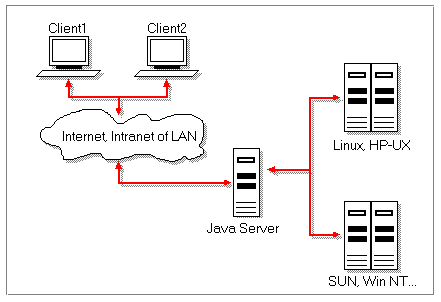 Figure 1: Three-tier MTool's architecture
Figure 1: Three-tier MTool's architecture
Three-tier architecture and Java
The demands for multiplatform, secure tool have brought us to a simple
decision. As we have a strong students' Java team at our lab, Java was
chosen as the basic development tool. It is a network oriented, robust
tool and provides enough security to fulfill our expectations. We won't
go deeply into details of the language itself but it is clear that Java
is not appropriate for system programming which is needed for accessing
system resources. That was the reason that we'd chosen a three-tier architecture
(Fig. 1). This architecture represents a response to some of the drawbacks
of the standard two-tier client/server network architecture. Client/server
applications are quite easy to program but the problem is how to manage
client side software. The problem is even bigger when we are surrounded
with the multiplatform environment. Three-tier architecture introduces
so called middleware (Java server on Fig. 1). Generally, this is a server
software representing a bridge between a client and a server. The middle
tier is not just capable of handling more client connections but it provides
much more secure way of communication. And since the middleware and client
part can be written in Java we come to the very important issue - the platform
independence. Clients are no more urged to use platform dependent code.
Even more, a copy of Java enabled network browser such a Netscape would
suffice. The developers can now take a breath since they don't have to
worry about many different platform dependent versions of their software.
This is also a basic idea of the network computers (NC). Whenever the developers
change the clients' code, a new version is always available on middle-tier
server and next time they run the program, a new version would be automatically
downloaded. In our case both client's software and middleware are written
in Java. The platform dependent software which provides information to
the clients over the middleware is written in ANSI C. The communication
between middleware and monitored computers is realized through the sockets.
More about that later in the technical part.
Linux
As we have already mentioned, first we had a daemon (mtoold) written
for SUN workstations since they represent a majority in Switzerland's academic
network. But the environment we come from is mainly equipped with HP workstations
and, if we don't count Windows 95/NT computers, we have more than 70 Linux
boxes around the classrooms and labs. I can say that we've learned a lot
from Linux and the first beginnings reach in the year 1993 when we built
our first Linux box using the 0.99pl15 kernel. These times are not so far
away and we are very glad that Linux has made such a tremendous progress
since that. So Linux as a development "playground" was then really a logical
choice. Linux has a very well documented /proc file system which
was also exhaustively explained in the April issue of Linux Journal. Talking
about documentation there is really no such a documented operating system
like Linux. What we really miss is a good Java development tool. If Linux
would have a GUI like Symantec's Visual Cafe we would be very happy, By
then, we are still forced to use command line Java compilers and interpreters
that come with standard Java development kit (JDK 1.0 or JDK 1.1). In the
mean time we use Visual Cafe under Windows for creation of the user interface
and after we add some specific code manually.
Architecture of MTool
Three-tier architecture turned out as to be a good solution. We cope with
three different levels:
-
client software
-
middleware
-
platform dependent daemons
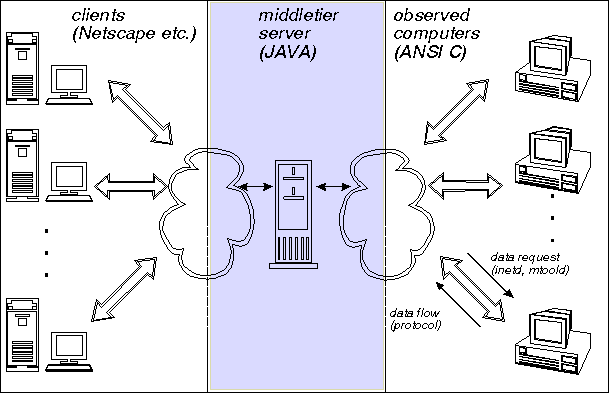 Figure 2: Three-tier architecture of MTool in details
To monitor specific systems you have to be connected to the network. Actually
you have to connect to the middle tier Java server. Client's side presents
just a GUI (Graphical User Interface). Since it is written in Java a Java
capable browser is all that you need. After you make a connection to the
Java server a GUI code is transferred to your local machine. Code is then
interpreted with Java built-in interpreter (if you use i.e. Netscape).
The central point of our system is of course that middle tier Java server.
It does not only hold Java classes which are transferred to the local clients
but it also takes care about the monitoring itself. Java server is a program
that runs all the time but it demands only a few system resources. It addresses
monitored computers and asks them for new data. Communication is realized
via sockets and is very simple. We introduced also a very simple protocol
for data transfer. Let's take a closer look to each part of our performance
tool.
Figure 2: Three-tier architecture of MTool in details
To monitor specific systems you have to be connected to the network. Actually
you have to connect to the middle tier Java server. Client's side presents
just a GUI (Graphical User Interface). Since it is written in Java a Java
capable browser is all that you need. After you make a connection to the
Java server a GUI code is transferred to your local machine. Code is then
interpreted with Java built-in interpreter (if you use i.e. Netscape).
The central point of our system is of course that middle tier Java server.
It does not only hold Java classes which are transferred to the local clients
but it also takes care about the monitoring itself. Java server is a program
that runs all the time but it demands only a few system resources. It addresses
monitored computers and asks them for new data. Communication is realized
via sockets and is very simple. We introduced also a very simple protocol
for data transfer. Let's take a closer look to each part of our performance
tool.
Client software
At the client's side one has to run a starting applet which brings up a
basic window where all the computers that could be monitored are listed
(Fig. 3). Once we choose a computer's name from the list a second window
appears containing all the information about the observed system. We use
a tabbed panel to display different sort of data (Fig. 4). We've chosen
a tabbed panel due to ease of upgrade. If we would add some new system
information there are no problems with the graphical interface - we simply
add a new panel.
 Figure 3: Main MTool window
For the time being we can provide the following system resources:
Figure 3: Main MTool window
For the time being we can provide the following system resources:
-
CPU info (user, nice, idle, sys, average) and network traffic (Fig. 4)
-
disk and memory info (free, used, swap) (Fig. 5)
-
processes (Fig. 6)
-
user connections (Fig. 7)
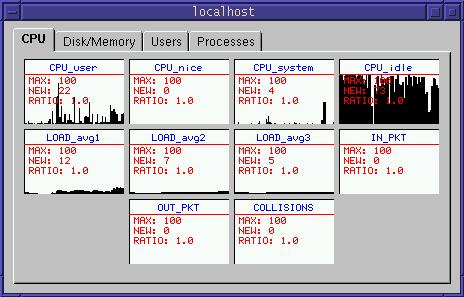 Figure 4: CPU and network usage panel
Figure 4: CPU and network usage panel
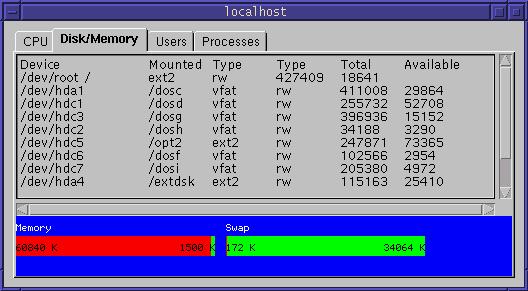 Figure 5: Disk info and memory usage panel
Figure 5: Disk info and memory usage panel
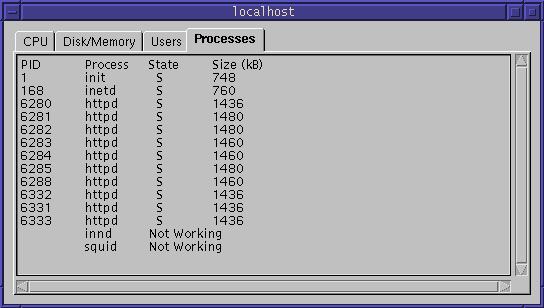 Figure 6: Processes (preconfigured selection) panel
Figure 6: Processes (preconfigured selection) panel
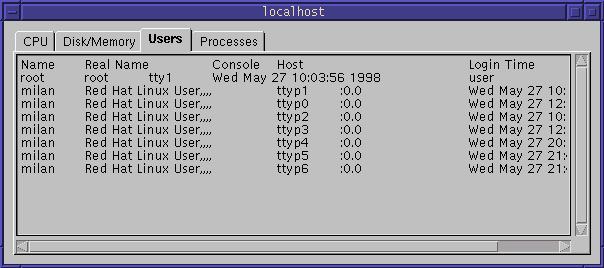 Figure 7: Users connections panel
Figure 7: Users connections panel
Middleware - Java server
Java server is supposed to run on an independent computer but it can run
also on one of the clients of one of the monitored computers. The communication
with the monitored computers via sockets is very short and it lasts just
for the time during the data transfer. We can choose any time how often
Java server requests system resources data. Then a ``ping'' to all monitored
computers is sent. To make a long story short at the end mtoold
is woke up by the inetd. MToold reads system resources
information and forwards it to the middle tier Java server. After completion
a mtoold daemon ``dies'' till the next server's ping. The platform
dependent daemon mtoold therefore ``lives'' and takes system resources
just for a short time. For its operation Java server is supported by one
configuration file, named MTool.conf. Its first part contains
the list of computers to be monitored. A time between monitoring interval
follows next, and the third part contains the list of clients' computers
that are authorized to communicate with Java server and thus monitor selected
computer systems. We can use both IP addresses or IP host names. As you
can see from the sample configuration file below one can use also asterisk
in defining domain name or subnetwork address.
# First come hosts, that are to be monitored
cebelica.uni-mb.si
mravljica.uni-mb.si
cmrlj.uni-mb.si
strela.fcs.uni-mb.si
grom.uni-mb.si
164.8.253.16
# Monitoring time interval in sec
4
# Clients with access to monitored hosts
*.hermes.si
130.216.54.51
164.8.253.99
130.15.40.*
193.246.15.*
164.8.253.*
Platform dependent daemons
Just a few more words about the daemon mtoold. It is written in
ANSI C and it is platform dependent. As a matter of fact it depends quite
strong upon the platform. With Linux we use /proc file system
for CPU, memory and network info, while SUN and HP do not provide such
an elegant approach. There we have to use /dev/kmem files. In
April's LJ there was a very explanatory article about Linux's /proc
file system so there is no need to go into details. We should also mention
a protocol defined for socket communication. Information is transferred
as ASCII stream concatenated from reserved words such as GRAPH,
VALUE, disk, user, process etc. and
specific values which are separated with delimiter ``|''. A sample stream
looks like:
GRAPH|LOAD_avg1|0.06|GRAPH|LOAD_avg2|0.12|GRAPH|LOAD_avg3|0.22|
GRAPH|CPU_user|1.00|GRAPH|CPU_nice|0.00|GRAPH|CPU_system|0.00|
GRAPH|CPU_idle|99.00|VALUE|MEM_real|14652K|VALUE|MEM_free|252K|
VALUE|MEM_swap|33260K|VALUE|MEM_swap_free|31620K|
Without any difficulties we can add new observed parameter. For now one
could intercept data transferred over the network. Therefore we also prepare
Java encryption classes which would enable secure data transfer. We are
in the middle of realization of DES and RSA algorithms. RSA should serve
for key exchange (public and private) while DES which is faster would serve
for the data transfer itself. A mtoold uses one simple configuration
file which holds the names of the processes to be monitored. If the file
is empty an information about all processes that are running on a monitored
computer are transferred over the socket communication line.
At the end
Actually, we are not at the end. Current version of MTool is just an intermediate
step towards more sophisticated and usable tool. But even now it provides
a comfortable way of system monitoring. The main issue is that if we are
authorized, we can monitor selected systems from any place in the world.
A Java capable browser is enough. We also hope that we pointed out the
main benefits of such an approach and that MTool it is a small but a powerful
tool. Linux as a development environment was a really good and logical
choice but still we would like to appeal to the (non)commercial software
companies to provide more Java development tools under Linux. Linux and
Java together represent a competitive, reliable and cheap development system.







